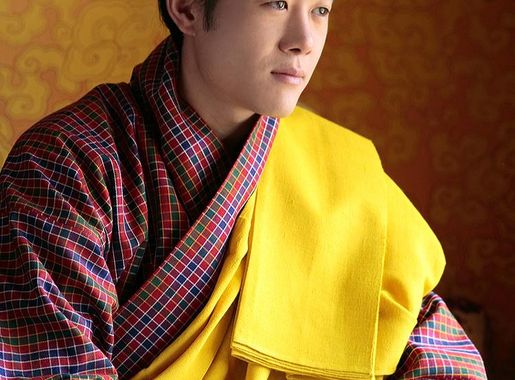
The Untouched Beauty of Zhemgang District, Bhutan
Discover the untouched beauty of Zhemgang District in Bhutan, where lush forests, vibrant culture, and rich wildlife promise an unforgettable travel experience.
Nestled in the heart of Bhutan, Zhemgang District is a hidden gem waiting to be discovered. This region is known for its lush greenery, diverse wildlife, and vibrant culture. As you journey through Zhemgang, you will be greeted by panoramic views of dense forests and scenic landscapes that are nothing short of breathtaking. Zhemgang is home to some of Bhutan's most beautiful monasteries and temples. These sacred sites offer a glimpse into the rich spiritual heritage of the region. The district is also famous for its unique festivals, which provide an immersive experience into the local traditions and customs. From the traditional dances to the colorful attire, every festival is a celebration of Zhemgang's cultural richness. For nature lovers, Zhemgang is a paradise. The district boasts several trekking trails that take you through pristine forests and along serene rivers. Wildlife enthusiasts can explore the Royal Manas National Park, which is home to a wide variety of flora and fauna, including the endangered golden langur. Whether you are looking for adventure or tranquility, Zhemgang offers a perfect blend of both.
Local tips in Zhemgang District
- Best time to visit is from March to May and September to November for pleasant weather.
- Carry cash as ATMs and card facilities are limited in remote areas.
- Respect local customs and dress modestly, especially when visiting religious sites.
- Engage with locals to learn about their traditional practices and way of life.
- Hire a local guide for trekking to fully appreciate the region's natural beauty and wildlife.
The Untouched Beauty of Zhemgang District, Bhutan
Nestled in the heart of Bhutan, Zhemgang District is a hidden gem waiting to be discovered. This region is known for its lush greenery, diverse wildlife, and vibrant culture. As you journey through Zhemgang, you will be greeted by panoramic views of dense forests and scenic landscapes that are nothing short of breathtaking. Zhemgang is home to some of Bhutan's most beautiful monasteries and temples. These sacred sites offer a glimpse into the rich spiritual heritage of the region. The district is also famous for its unique festivals, which provide an immersive experience into the local traditions and customs. From the traditional dances to the colorful attire, every festival is a celebration of Zhemgang's cultural richness. For nature lovers, Zhemgang is a paradise. The district boasts several trekking trails that take you through pristine forests and along serene rivers. Wildlife enthusiasts can explore the Royal Manas National Park, which is home to a wide variety of flora and fauna, including the endangered golden langur. Whether you are looking for adventure or tranquility, Zhemgang offers a perfect blend of both.
When is the best time to go to Zhemgang District?
Iconic landmarks you can’t miss
Chowki Picnic Spot
Discover the tranquility of Chowki Picnic Spot, a hidden gem in Manas National Park, Assam, perfect for nature lovers and outdoor enthusiasts.
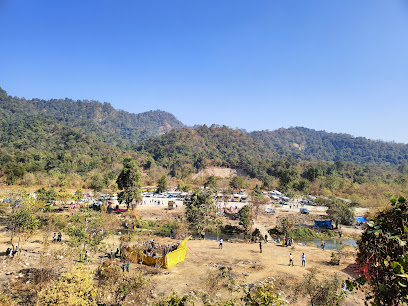
National Memorial Chhorten རྒྱལ་ཡོངས་རྗེས་དྲན་མཆོད་རྟེན།
Discover the National Memorial Chhorten, Thimphu's sacred stupa that embodies Bhutan's rich spiritual heritage and stunning architectural beauty.
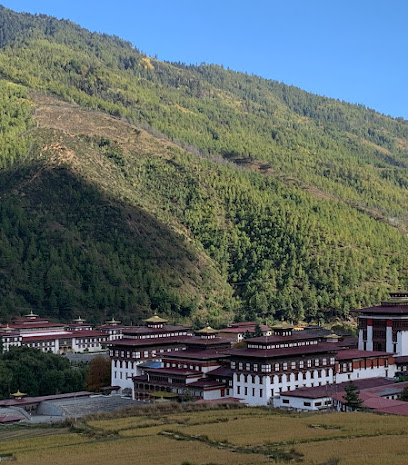
Indo-Bhutan Border Gateway
Discover the Indo-Bhutan Border Gateway, a serene blend of cultures and breathtaking landscapes, perfect for travelers seeking unique experiences.
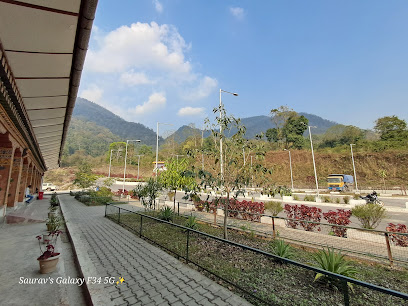
Bhutan chowki
Explore Bhutan Chowki, a serene tourist attraction in Deothang, India, known for its breathtaking views and rich cultural experiences.
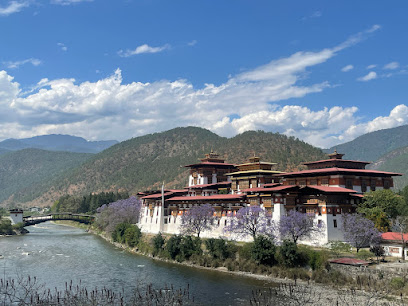
Indo-Bhutan Gate, Samdrup Jongkhar.
Discover the Indo-Bhutan Gate in Samdrup Jongkhar, a stunning border crossing that embodies the friendship between India and Bhutan, surrounded by breathtaking scenery.
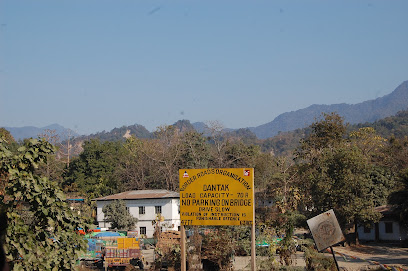
Royal Manas National Park
Experience the breathtaking landscapes and rich biodiversity of Royal Manas National Park in Bhutan, a UNESCO World Heritage site perfect for nature lovers.
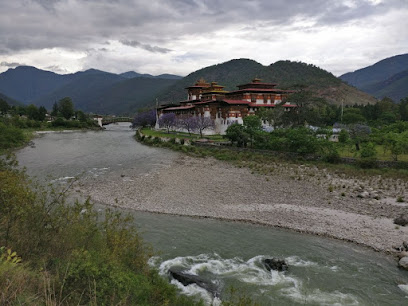
Jigme Singye Wangchuck National Park
Explore the breathtaking beauty and rich biodiversity of Jigme Singye Wangchuck National Park, a true natural jewel in Bhutan.
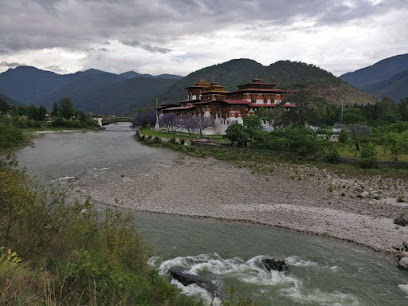
Jamphel Lhakhang བྱམས་་པ་ལྷ་ཁང་།
Explore Jamphel Lhakhang, an iconic Buddhist temple in Bumthang, Bhutan, where spirituality meets breathtaking natural beauty.
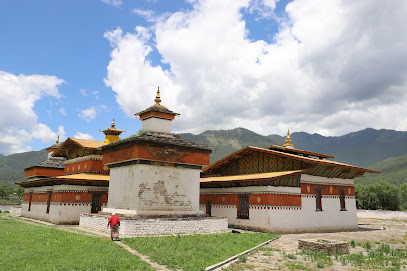
Trongsa Dzong ཀྲོང་གསར་རྫོང།
Discover the enchanting Trongsa Dzong, a historical fortress and spiritual haven that embodies Bhutan's rich cultural heritage and breathtaking landscapes.
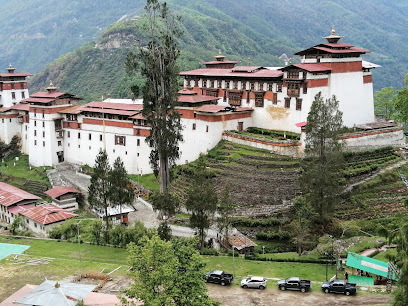
Gelephu Clock Tower
Discover the charm of Gelephu Clock Tower, a cultural landmark that symbolizes the heart of Bhutanese life amidst vibrant local markets and scenic views.
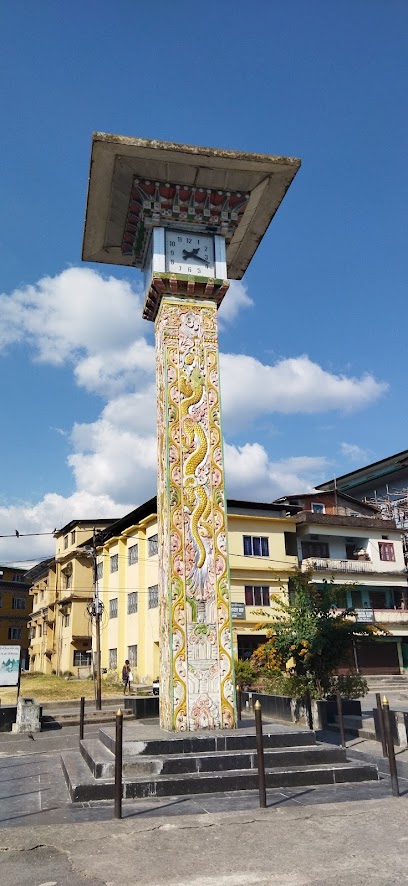
Kalanadi Picnic Spot
Experience the tranquil allure of Kalanadi Picnic Spot, where Bhutan's breathtaking blue hills create the perfect backdrop for a relaxing day outdoors.
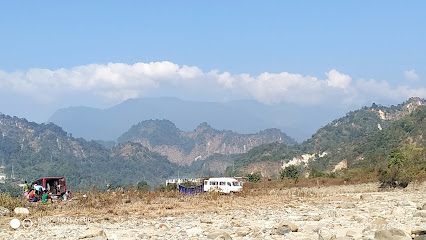
Tamshing Lhakhang གཏམ་ཞིང་ལྷ་ཁང་།
Explore the spiritual heart of Bhutan at Tamshing Lhakhang, a stunning Buddhist temple steeped in history and culture.
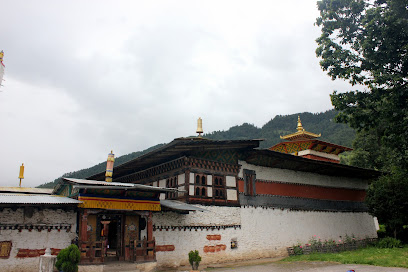
Chendebji Chorten སྤྱན་སྡེབ་སྦྱིས་མཆོད་རྟེན།
Explore the serene beauty of Chendebji Chorten, an iconic Buddhist temple in Bhutan, rich in culture and spiritual significance.
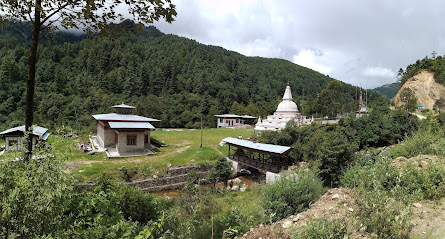
Taa-Dzong བལྟ་རྫོང་།
Explore Taa-Dzong, a heritage museum in Bhutan showcasing the rich history and culture of this mystical kingdom through captivating exhibits.
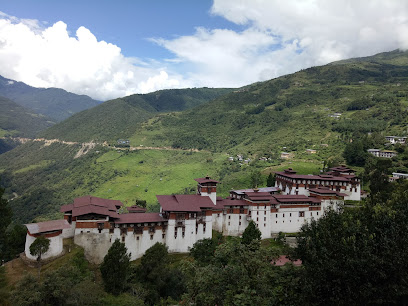
Phrumsengla National Park
Explore the breathtaking beauty of Phrumsengla National Park, a national treasure in Bhutan, rich in biodiversity and stunning landscapes.
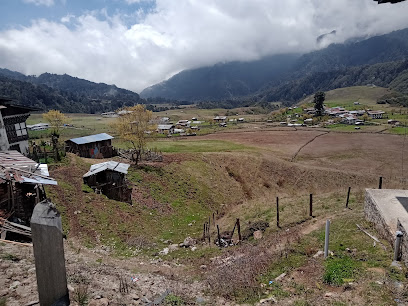
Unmissable attractions to see
Indo-Bhutan Border Gateway
Discover the breathtaking beauty and rich cultural tapestry at the Indo-Bhutan Border Gateway, a must-visit tourist attraction.
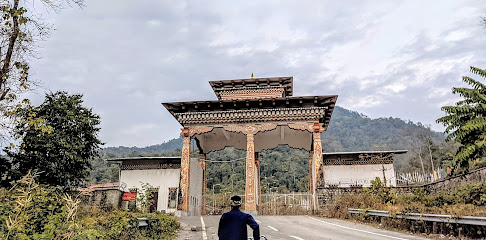
Phobjikha Valley
Explore the breathtaking beauty and tranquility of Phobjikha Valley, a serene haven in Bhutan known for its stunning landscapes and rich biodiversity.
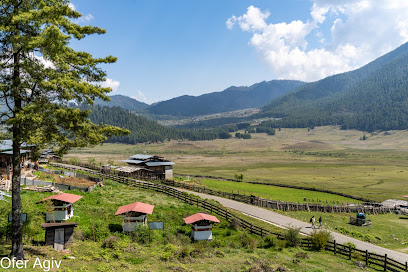
Trongsa Dzong ཀྲོང་གསར་རྫོང།
Explore Trongsa Dzong, a stunning fortress in Bhutan, known for its rich history, breathtaking architecture, and spiritual significance.
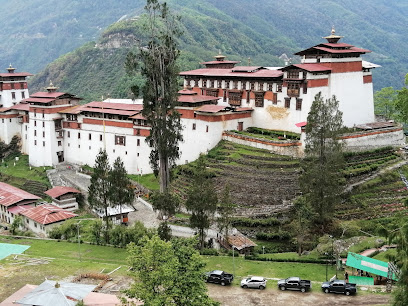
Könchogsum Lhakhang དཀོན་མཆོག་གསུམ་ལྷ་ཁང་།
Discover the serene beauty and cultural richness of Könchogsum Lhakhang, a tranquil Buddhist temple in Jakar, Bhutan, perfect for spiritual seekers.

Twin Waterfall
Experience the enchanting beauty of Twin Waterfall in Bioka – a natural paradise perfect for relaxation, adventure, and unforgettable memories.
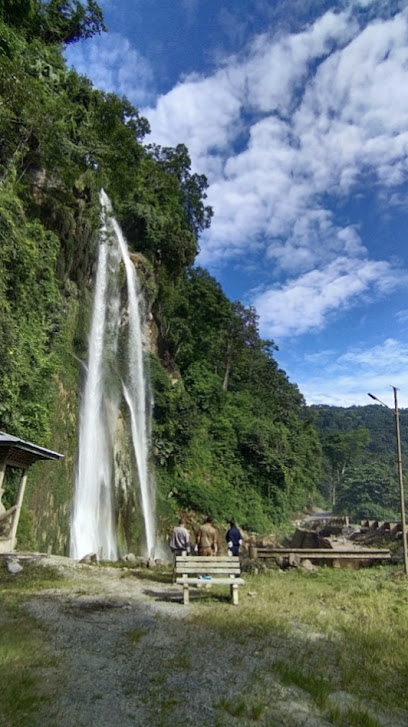
Chamkhar Bridge ལྕམ་མཁར་ཟམ་པ།
Discover the breathtaking Chamkhar Bridge, a stunning architectural marvel nestled in Bhutan's serene landscapes, connecting communities and cultures.
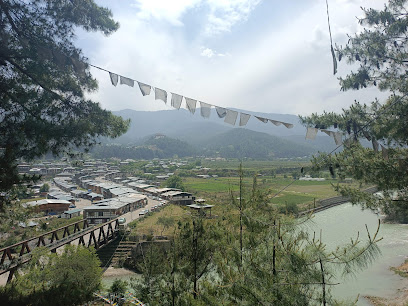
Duenmang Tsachu
Discover Duenmang Tsachu, a tranquil thermal bath experience nestled in Bhutan's Zhemgang district, perfect for relaxation and natural beauty.
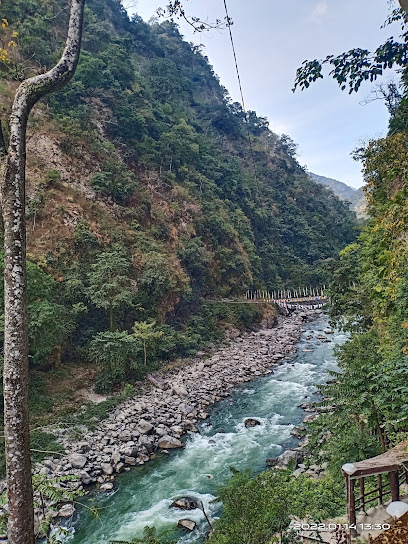
Ngala Lhakhang
Discover tranquility at Ngala Lhakhang, a serene Buddhist temple in Naspe, Bhutan, where spirituality and stunning architecture come together.
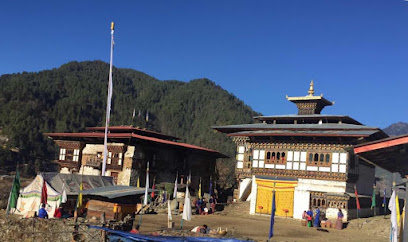
Bhutan View
Experience the stunning vistas at Bhutan View, a breathtaking tourist attraction along the Sarpang - Gelephu - Trongsa Highway in the heart of Bhutan.
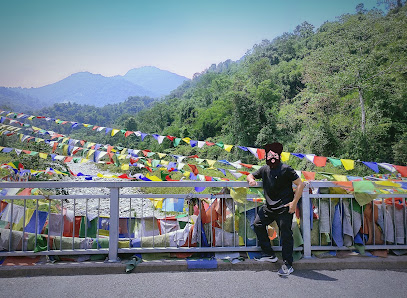
Choedrak ཆོས་བྲག།
Explore Choedrak, a serene Buddhist temple in Jakar, Bhutan, offering a unique blend of spirituality, culture, and breathtaking landscapes.
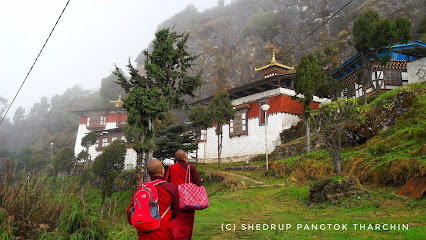
Zero Point
Discover the tranquil beauty of Zero Point in Zhemgang, a picturesque park perfect for relaxation and nature lovers in Bhutan.
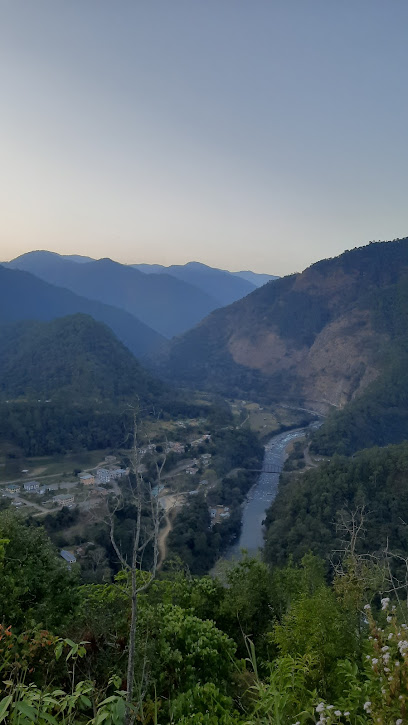
Airport viewpoint B
Experience the stunning beauty of Bhutan at Airport Viewpoint B in Jakar, where breathtaking mountain landscapes await every visitor.
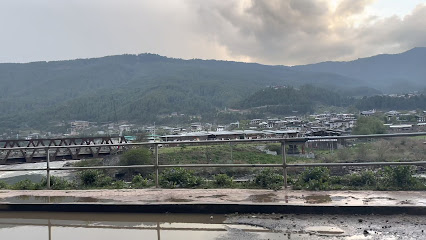
GANGZUR VILLAGE
Experience the serene beauty and rich culture of Gangzur Village, a hidden gem in Bhutan's Lhuntse district, perfect for immersive travel.
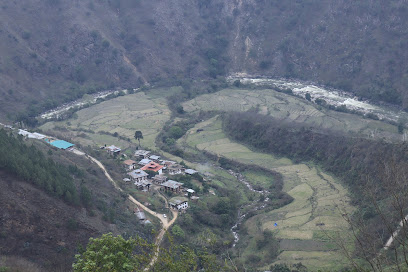
Pathibhara
Experience the spiritual essence and breathtaking beauty of Pathibhara, a must-visit pilgrimage site nestled in the serene mountains of Bhutan.
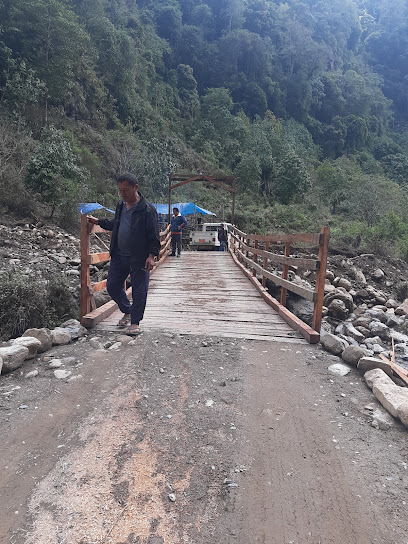
Sonaml Dakphel
Experience the tranquility of Sonaml Dakphel Park in Bali, a serene retreat for nature lovers and peace seekers alike amidst lush landscapes.

Essential places to dine
Willing Waterfall Cafe
Discover tranquility at Willing Waterfall Cafe, where delicious cuisine meets breathtaking views along Bhutan's scenic highway.
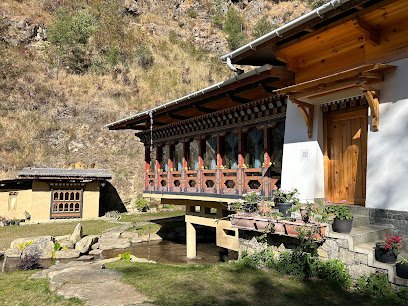
Pool cafe
Discover culinary delights and refreshing leisure at Pool Cafe in Gelephu - where dining meets relaxation.
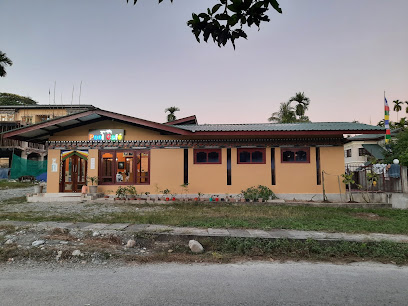
Yangchhag Hotel & Restaurant
Discover comfort and authentic Bhutanese flavors at Yangchhag Hotel & Restaurant in Nganglam.
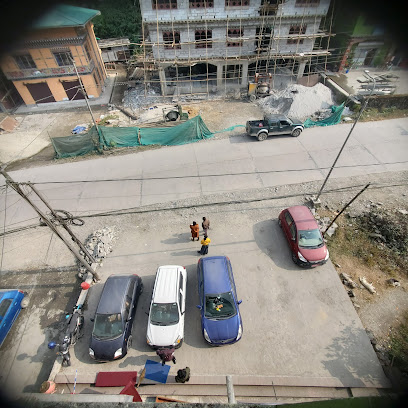
Someplace Else
Discover an exceptional dining experience at Someplace Else in Gelephu, where local flavors meet global cuisine amidst warm hospitality.
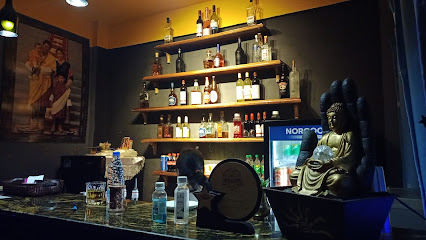
Ngawang home stay bumthang tamzhing
Discover authentic Bhutanese cuisine at Ngawang Home Stay Bumthang – where culture meets comfort in every dish.
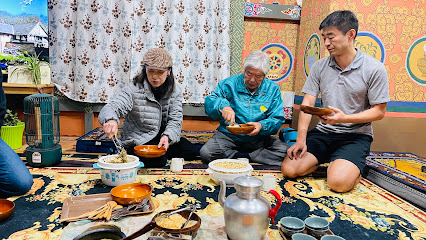
Norjun Restaurant
Experience authentic Bhutanese flavors at Norjun Restaurant in Trongsa - where culinary tradition meets warm hospitality.
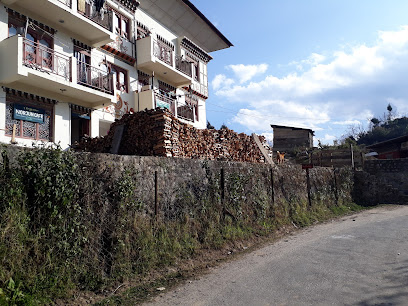
Swiss Guest House Restaurant
Experience a delightful blend of Bhutanese flavors and Swiss specialties at the Swiss Guest House Restaurant in Jakar.
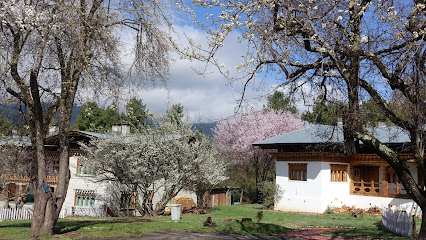
Nangloo Restaurant
Discover authentic Bhutanese cuisine at Nangloo Restaurant in Gelephu – where every dish tells a story of tradition and flavor.
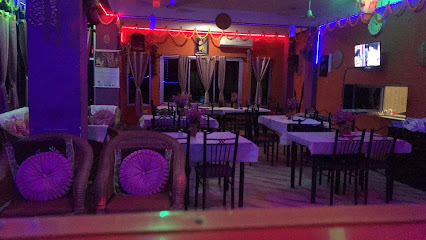
Rinzin Restaurant
Experience authentic Bhutanese flavors at Rinzin Restaurant in Nganglam—where every meal tells a story.
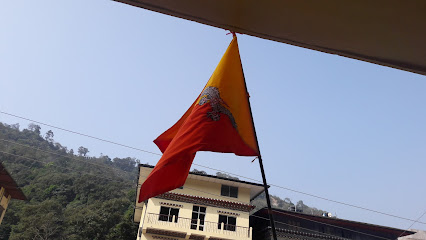
Kuenzang Hotel & Bar
Experience authentic Bhutanese cuisine at Kuenzang Hotel & Bar along Bumthang - Ura Highway in Sengor – A true culinary delight amidst stunning landscapes.
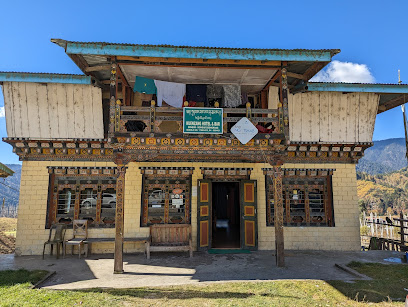
Samcholing Green Tea House
Experience authentic Bhutanese culture and exquisite green tea at Samcholing Green Tea House in tranquil Trongsa.
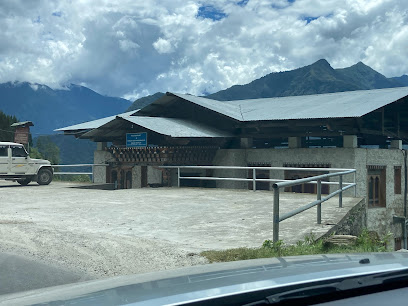
Kharamphay, Tangsibi, Ura, Bumthang
Experience authentic Bhutanese cuisine at Kharamphay in Ura, Bumthang—where every dish tells a story.
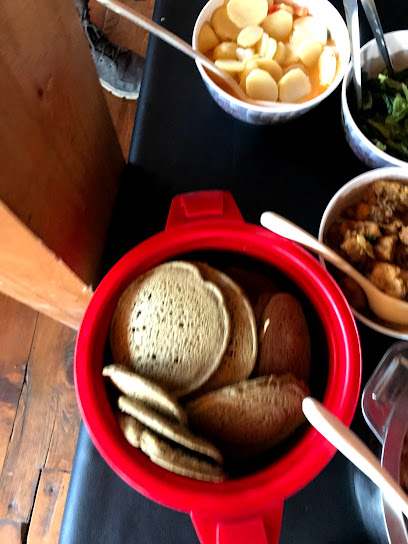
Tashi Gatshel Food and Lodge
Experience authentic Bhutanese cuisine at Tashi Gatshel Food and Lodge, where tradition meets flavor in every dish.
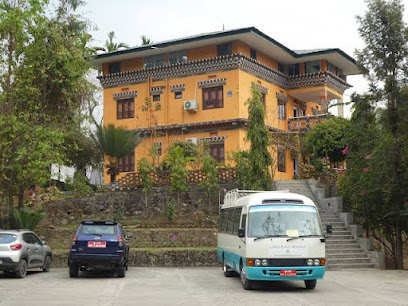
Tshering Yangkhil Restaurant
Experience authentic Bhutanese cuisine at Tshering Yangkhil Restaurant in Zhemgang – a must-visit destination for food lovers exploring Bhutan.
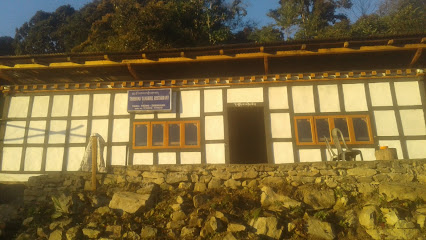
Lhenzom Pure Vegetarian Hotel
Savor authentic Bhutanese vegetarian cuisine at Lhenzom Pure Vegetarian Hotel in Trongsa—where flavor meets tradition.
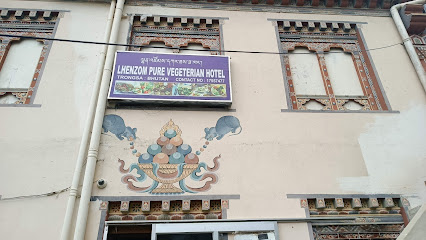
Markets, malls and hidden boutiques
Goleng Factory
Discover the beauty of Bhutanese craftsmanship at Goleng Factory, where tradition meets artistry in every handmade product.
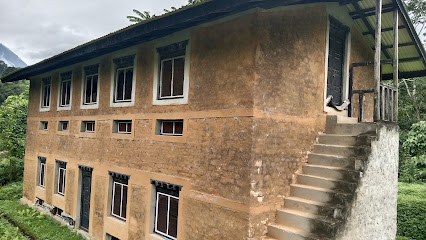
Migma Bakery
Discover Migma Bakery in Zhemgang, where freshly baked goods and local flavors come together for a delightful culinary experience.
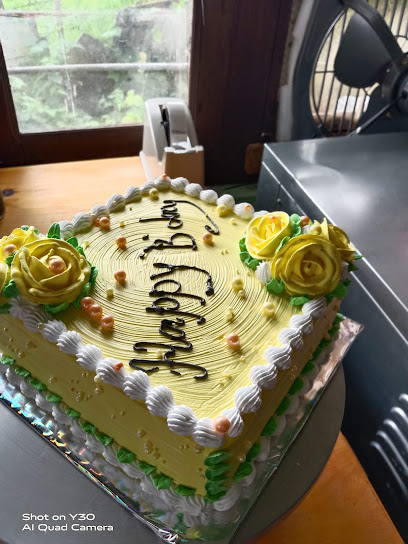
Tashi Dema Tshongkhang
Explore Tashi Dema Tshongkhang in Thrisa: Your gateway to authentic Bhutanese crafts and local culture.

Rinchen Yangzom General Shop
Explore the vibrant offerings of Rinchen Yangzom General Shop in Nimgong, a must-visit destination for unique local goods and cultural insights.
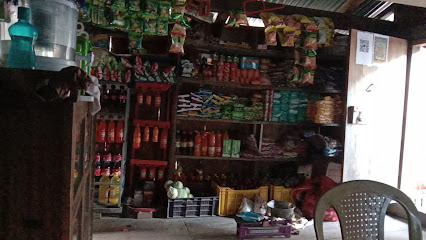
Jambay Shop
Explore Jambay Shop in Panbang Town for a unique shopping experience blending local culture with modern retail delights.

U DEE meat shop
Explore authentic Bhutanese flavors at U DEE Meat Shop, a local gem in Zhemgang specializing in high-quality meat products.
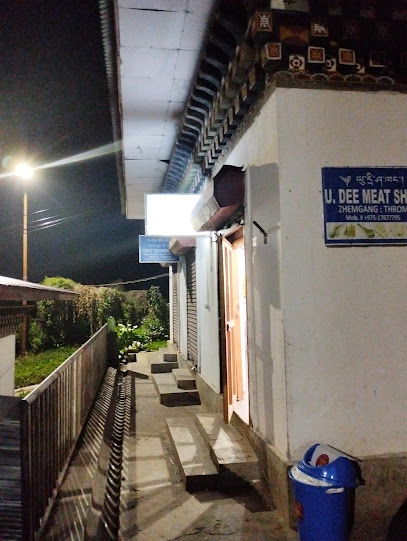
Tshelha Enterprise
Explore the heart of Bhutan's agriculture at Tshelha Enterprise, a unique animal feed store in Zhemgang, and discover local farming traditions.

Pema General Shop
Discover local flavors and crafts at Pema General Shop, your essential stop for authentic Balinese goods in the heart of Bali.
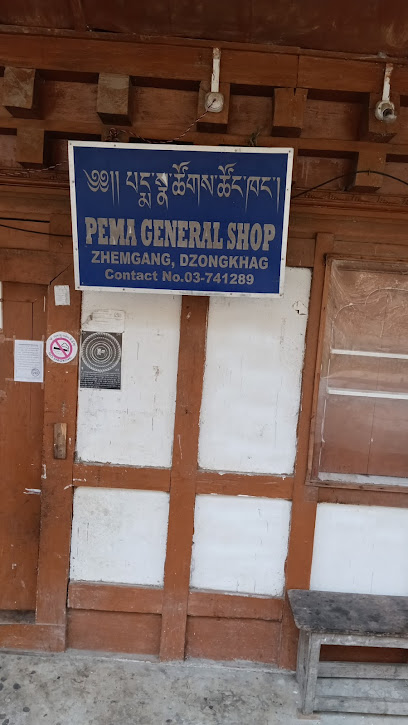
Sonam Yangzom General Shop
Explore the vibrant offerings of Sonam Yangzom General Shop in Shuri, where local crafts and delicious snacks await every tourist.

Keebee
Explore the sweet side of Bhutan at Keebee Bakery in Shingkhar, where traditional flavors meet delightful pastries.

Kuenphen General Shop
Explore the heart of Thrisa at Kuenphen General Shop, where local culture meets authentic shopping in Shingkhar.
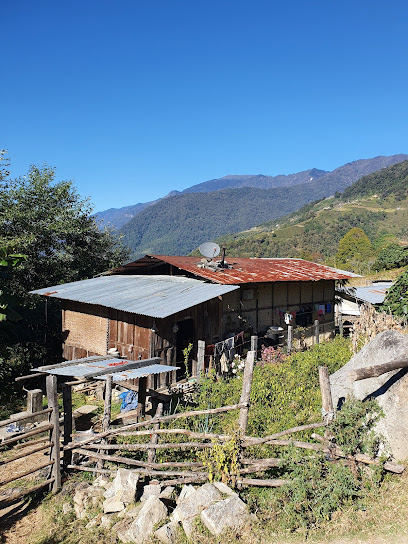
Leki wangmo general shop
Explore the heart of Gonphu at Leki Wangmo General Shop, your destination for unique local crafts and traditional Bhutanese goods.
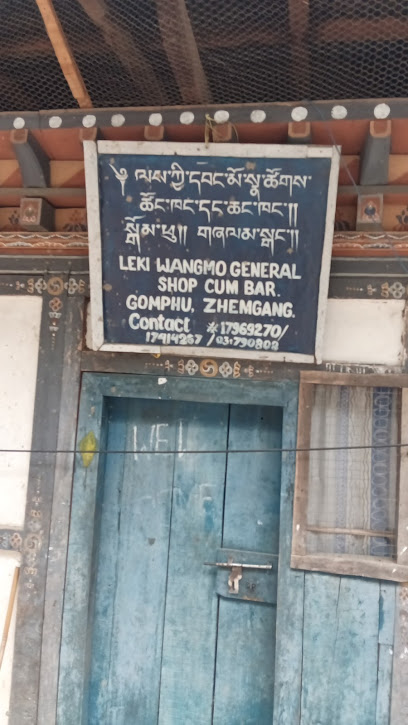
Karma Rinchen Shop
Explore Karma Rinchen Shop in Gonphu for authentic Bhutanese souvenirs and a taste of local culture.

Sherab General shop
Experience the essence of Bhutan at Sherab General Shop, where local culture meets unique handicrafts and everyday essentials.

Thinley Pem general shop
Explore Thinley Pem General Shop in Bhutan for authentic local goods, unique handicrafts, and a taste of the vibrant local culture.

Essential bars & hidden hideouts
Tshering Yangkhil Restaurant
Experience authentic Bhutanese cuisine in a cozy, traditional setting at Tshering Yangkhil Restaurant in Zhemgang.
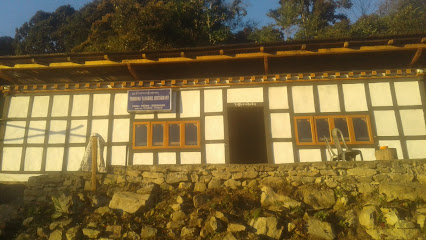
TP's Bar
Discover the vibrant energy of TP's Bar in Lingmethang, where local culture meets modern comfort in a lively atmosphere.
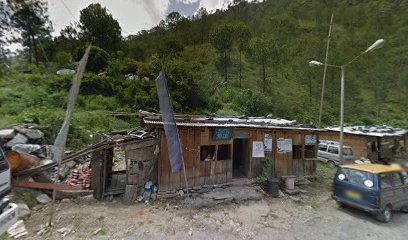
Tenzin Wangmo Bar
Discover the essence of Bhutanese culture at Tenzin Wangmo Bar, where local flavors and warm hospitality unite in a vibrant atmosphere.
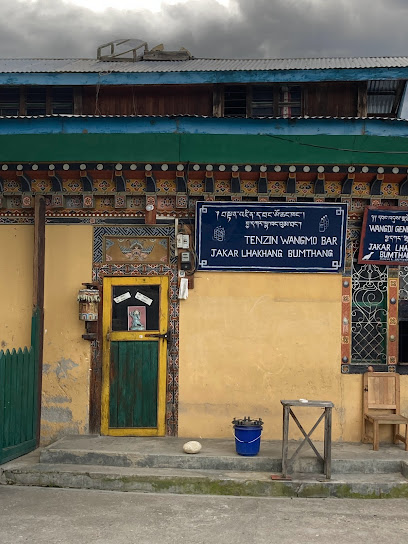
SD-FAST FOOD Panbang
Discover the vibrant flavors of Bhutan at SD-FAST FOOD Panbang, a cozy eatery offering authentic dishes in a welcoming atmosphere.
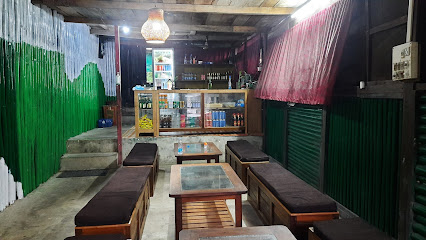
Aum Koka Restaurant and Bar
Experience the best of Bhutanese cuisine at Aum Koka Restaurant and Bar in Zhemgang, where every dish tells a story of tradition and flavor.
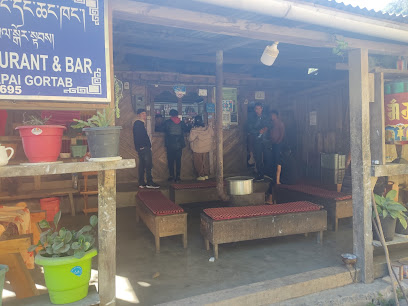
Ura Yurgang
Discover the charm of Ura Yurgang, a local bar in Bhutan where you can relax and experience authentic Bhutanese hospitality.
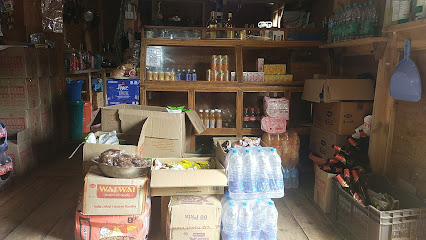
Chenzom Bar
Immerse yourself in the lively atmosphere of Chenzom Bar, where tradition meets modernity in the heart of Jakar, Bhutan.
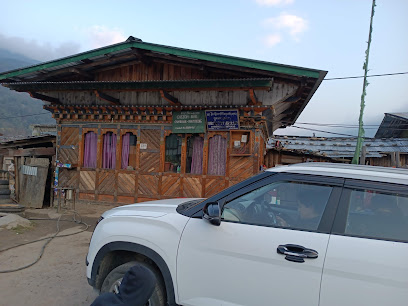
Yeshi Restaurant
Experience authentic Bhutanese flavors and warm hospitality at Yeshi Restaurant in Gonphu, a culinary gem that delights every palate.
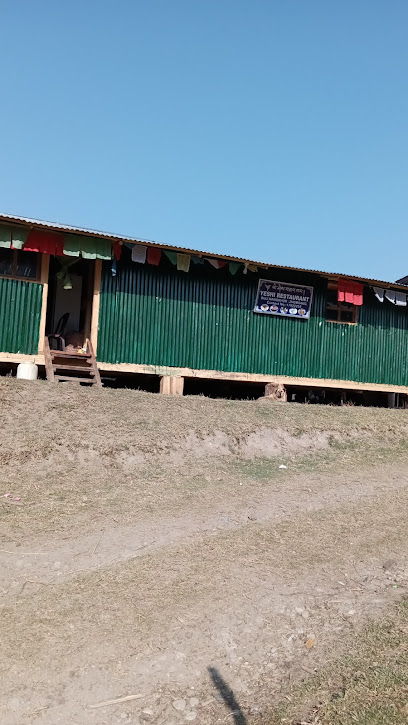
Chomo Restuarent
Experience the authentic flavors of Bhutan at Chomo Restaurant, a vibrant bar in Jakar offering traditional and international cuisine.
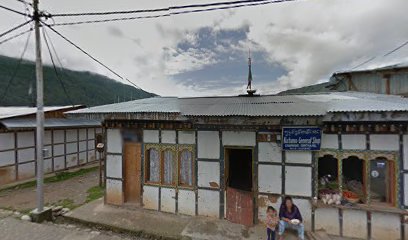
LEO BAR
Discover the vibrant nightlife at LEO BAR, where local flavors and lively entertainment meet in a welcoming atmosphere.

Leki Bar
Discover the vibrant nightlife at Leki Bar in Gelephu, where local drinks and warm hospitality create unforgettable experiences.

Chechaymo Bar
Discover the charm of Jakar at Chechaymo Bar, where local flavors and stunning views create a memorable experience.
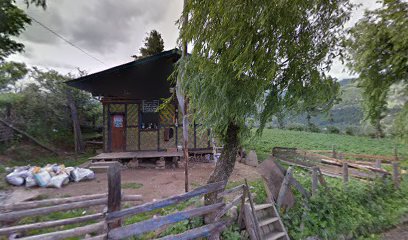
The generation bar
Discover the vibrant flavors of Gelephu at The Generation Bar, where every grilled dish tells a story of local culinary artistry.

Shenyen Restaurant
Discover the vibrant atmosphere and authentic flavors at Shenyen Restaurant, a must-visit bar in Tashibi:Zhemgang, Bhutan.

Tashicholing Dratshang, Bardo, Zhemgang
Experience the serene ambiance and local flavors at Tashicholing Dratshang, a unique bar in the heart of Bardo, Zhemgang, Bhutan.
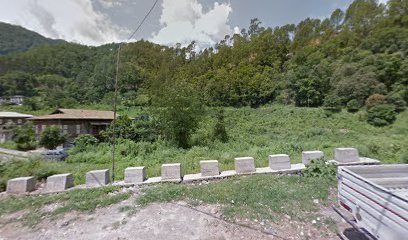
Local Phrases about Zhemgang District
-
- Helloཇ་བ་
[ja-ba] - Goodbyeཛང་ར
[dang-ra] - Yesདགས
[dag] - Noམེད
[me] - Please/You're welcomeཅིང་ཁའི་ལས
[ching-kha'i-la] - Thank youབསྐྱེད
[say-kay] - Excuse me/Sorryབཟོ་པ
[zo-pa] - How are you?ཁྱེད་ར་ཚོགས་ལ་སྤོ
[khe-drak-tshog-la-so] - Fine. And you?སྤོ་ཁྱེད. ཁྱེད་ར་ཚོགས་ལ་སྤོ?
[so-khe. khe-drak-tshog-la-so] - Do you speak English?གྲངས་ཀ་གཞི་ར་ཁྱེད་སྦོ?
[drang-ka-gshi-ra-khe-so] - I don't understandཁྱེད་ལ་མེད་འདྲ
[khe-la-me-dra]
- Helloཇ་བ་
-
- I'd like to see the menu, pleaseབཟོ་ཕས་གླེང་གས་ཡོད་ཁ་ཁྱེད་སྦོ?
[zo-pha-leng-ga-yo-kha-khe-so] - I don't eat meatབཀོད་ར་སུ་མེད་འདྲ
[ko-ra-su-me-dra] - Cheers!གཏོང་སྐད
[tong-ska] - I would like to pay, pleaseབཟོ་དགས་པ་ཡོད་ཁ་ཁྱེད་སྦོ?
[zo-dag-pa-yo-kha-khe-so]
- I'd like to see the menu, pleaseབཟོ་ཕས་གླེང་གས་ཡོད་ཁ་ཁྱེད་སྦོ?
-
- Help!དགས་སྤྱོད
[dag-cho] - Go away!དགས་སྤྱོད
[dag-cho] - Call the Police!དགས་སྤྱོད
[dag-cho] - Call a doctor!དགས་སྤྱོད
[dag-cho] - I'm lostདགས་སྤྱོད
[dag-cho] - I'm illདགས་སྤྱོད
[dag-cho]
- Help!དགས་སྤྱོད
-
- I'd like to buy...བཟོ་ཕས་ཆོག དགས་པ་ཡོད
[zo-pha-chog dag-pa-yo] - I'm just lookingམི་སྟོབས་སྗི
[mi-stop-ji] - How much is it?དགས་མིག་ཤོག?
[dag-mik-shog] - That's too expensiveདགས་མིག་ཤོག?
[dag-mik-shog] - Can you lower the price?དགས་མིག་ཤོག?
[dag-mik-shog]
- I'd like to buy...བཟོ་ཕས་ཆོག དགས་པ་ཡོད
-
- What time is it?དགས་སྤྱོད
[dag-cho] - It's one o'clockདགས་སྤྱོད
[dag-cho] - Half past (10)དགས་སྤྱོད
[dag-cho] - Morningདགས་སྤྱོད
[dag-cho] - Afternoonདགས་སྤྱོད
[dag-cho] - Eveningདགས་སྤྱོད
[dag-cho] - Yesterdayདགས་སྤྱོད
[dag-cho] - Todayདགས་སྤྱོད
[dag-cho] - Tomorrowདགས་སྤྱོད
[dag-cho] - 1གཅིག
[gci] - 2གཉིས
[gni] - 3གསུམ
[gsum] - 4ཙུང
[tsung] - 5ལྷ་
[lha] - 6དྷ་
[dha] - 7བད་
[bda] - 8བར་
[bar] - 9བད་པ
[bdap] - 10བཅུ
[bcu]
- What time is it?དགས་སྤྱོད
-
- Where's a/the...?དགས་མིག་ཤོག?
[dag-mik-shog] - What's the address?དགས་མིག་ཤོག?
[dag-mik-shog] - Can you show me (on the map)?དགས་མིག་ཤོག?
[dag-mik-shog] - When's the next (bus)?དགས་མིག་ཤོག?
[dag-mik-shog] - A ticket (to ....)དགས་མིག་ཤོག?
[dag-mik-shog]
- Where's a/the...?དགས་མིག་ཤོག?
History of Zhemgang District
-
Zhemgang District, historically known as Kheng, has a rich tapestry of early human settlement, with archaeological evidence suggesting that it has been inhabited since prehistoric times. The district's fertile valleys and strategic location along important trade routes made it a notable region for early communities who engaged in agriculture and trade.
-
The people of Zhemgang, known as the Khengpa, are believed to have a distinct cultural identity that dates back centuries. Historically, the Khengpa were known for their prowess in warfare and their ability to defend their territory against invasions. The region's rugged terrain provided natural fortifications, aiding the Khengpa in their defense efforts.
-
The spread of Buddhism in Bhutan had a profound impact on Zhemgang District. Guru Rinpoche, also known as Padmasambhava, is believed to have visited the area in the 8th century, bringing with him the teachings of Vajrayana Buddhism. Several sacred sites and temples, such as the Buli Lhakhang and the Shingkhar Dechenling Monastery, are attributed to his influence and are important pilgrimage sites even today.
-
During the 17th century, Zhabdrung Ngawang Namgyal, the unifier of Bhutan, played a pivotal role in consolidating the various regions, including Zhemgang. The district became an important part of the larger Bhutanese state, contributing to the country's cultural and political unity. Fortresses or dzongs were established in the region to serve as administrative and religious centers.
-
In the late 19th and early 20th centuries, Bhutan faced increasing pressure from British India. Zhemgang, with its strategic location, witnessed several skirmishes and defensive actions against British incursions. The resilient spirit of the Khengpa played a significant role in maintaining Bhutan's sovereignty during this tumultuous period.
-
Post-1960s, Zhemgang has seen significant development in terms of infrastructure and education. However, efforts have been made to preserve its unique cultural heritage. The district is known for its vibrant festivals, traditional crafts, and the preservation of the Khengpa dialect. Annual festivals like the Zhemgang Tshechu are celebrated with fervor, showcasing the district's rich cultural tapestry.
Zhemgang District Essentials
-
Zhemgang District is located in central Bhutan. The nearest international airport is Paro International Airport, approximately 320 kilometers away. From Paro, you can take a domestic flight to Gelephu Airport, which is the nearest airport to Zhemgang. From Gelephu, the district can be reached by road, which takes about 6-8 hours. Alternatively, you can hire a taxi or take a bus from Thimphu or Phuentsholing to Zhemgang, though the journey may be long and winding.
-
Zhemgang District is primarily served by road transport. Local buses and taxis are available for inter-district travel. Renting a car with a driver is a convenient option for exploring the region, as public transportation may not reach remote areas. Be prepared for rough and winding roads, especially in the hilly terrain. It is advisable to arrange transportation in advance through a travel agency or your hotel.
-
The official currency in Bhutan is the Bhutanese Ngultrum (BTN). Indian Rupees (INR) are also widely accepted. Credit cards are accepted in some hotels and larger shops, but it is advisable to carry cash, especially in smaller establishments and rural areas like Zhemgang. ATMs are limited, so withdraw sufficient cash in Thimphu or another major city before traveling to Zhemgang.
-
Zhemgang District is generally a safe destination for tourists. However, standard precautions should be taken. Avoid walking alone at night in isolated areas and keep an eye on your belongings in crowded places. There are no specific high-crime areas targeting tourists, but always be vigilant and aware of your surroundings.
-
In case of emergency, dial 113 for police assistance, 110 for medical emergencies, and 111 for fire services. The local police station and a basic healthcare facility are available in Zhemgang. It is recommended to have travel insurance that covers medical emergencies. For minor health issues, there are pharmacies where you can purchase over-the-counter medications.
-
Fashion: Do dress modestly, especially when visiting religious sites. Avoid wearing revealing clothing. Religion: Do respect local customs and traditions. When visiting monasteries and temples, remove your shoes and cover your head. Public Transport: Do be respectful and give up your seat to elderly passengers. Don't eat or drink on public transport. Greetings: Do greet people with a slight bow, and say 'Kuzuzangpo' (Hello). Eating & Drinking: Do try local delicacies and accept food offerings graciously. Don't refuse hospitality, as it is considered impolite.
-
To experience Zhemgang District like a local, visit the weekly markets where you can buy fresh produce and traditional Bhutanese goods. Engage with locals, as they are often friendly and willing to share stories about the region's history and culture. Don’t miss visiting the Zhemgang Dzong and the Royal Manas National Park for a unique experience. Taking part in local festivals can also provide a deeper understanding of the local culture and traditions.
Trending Landmarks in Zhemgang District
-
Chowki Picnic Spot
-
National Memorial Chhorten རྒྱལ་ཡོངས་རྗེས་དྲན་མཆོད་རྟེན།
-
Indo-Bhutan Border Gateway
-
Bhutan chowki
-
Indo-Bhutan Gate, Samdrup Jongkhar.
-
Royal Manas National Park
-
Jigme Singye Wangchuck National Park
-
Jamphel Lhakhang བྱམས་་པ་ལྷ་ཁང་།
-
Trongsa Dzong ཀྲོང་གསར་རྫོང།
-
Gelephu Clock Tower
-
Kalanadi Picnic Spot
-
Tamshing Lhakhang གཏམ་ཞིང་ལྷ་ཁང་།
-
Chendebji Chorten སྤྱན་སྡེབ་སྦྱིས་མཆོད་རྟེན།
-
Taa-Dzong བལྟ་རྫོང་།
-
Phrumsengla National Park
Nearby Cities to Zhemgang District
-
Things To Do in Jakar
-
Things To Do in Trongsa
-
Things To Do in Bumthang
-
Things To Do in Trashigang
-
Things To Do in Wangdue Phodrang
-
Things To Do in Punakha
-
Things To Do in Thimphu
-
Things To Do in Guwahati
-
Things To Do in Phuentsholing
-
Things To Do in Paro
-
Things To Do in Shillong
-
Things To Do in Rangpur
-
Things To Do in Gangtok
-
Things To Do in Siliguri
-
Things To Do in Darjeeling

